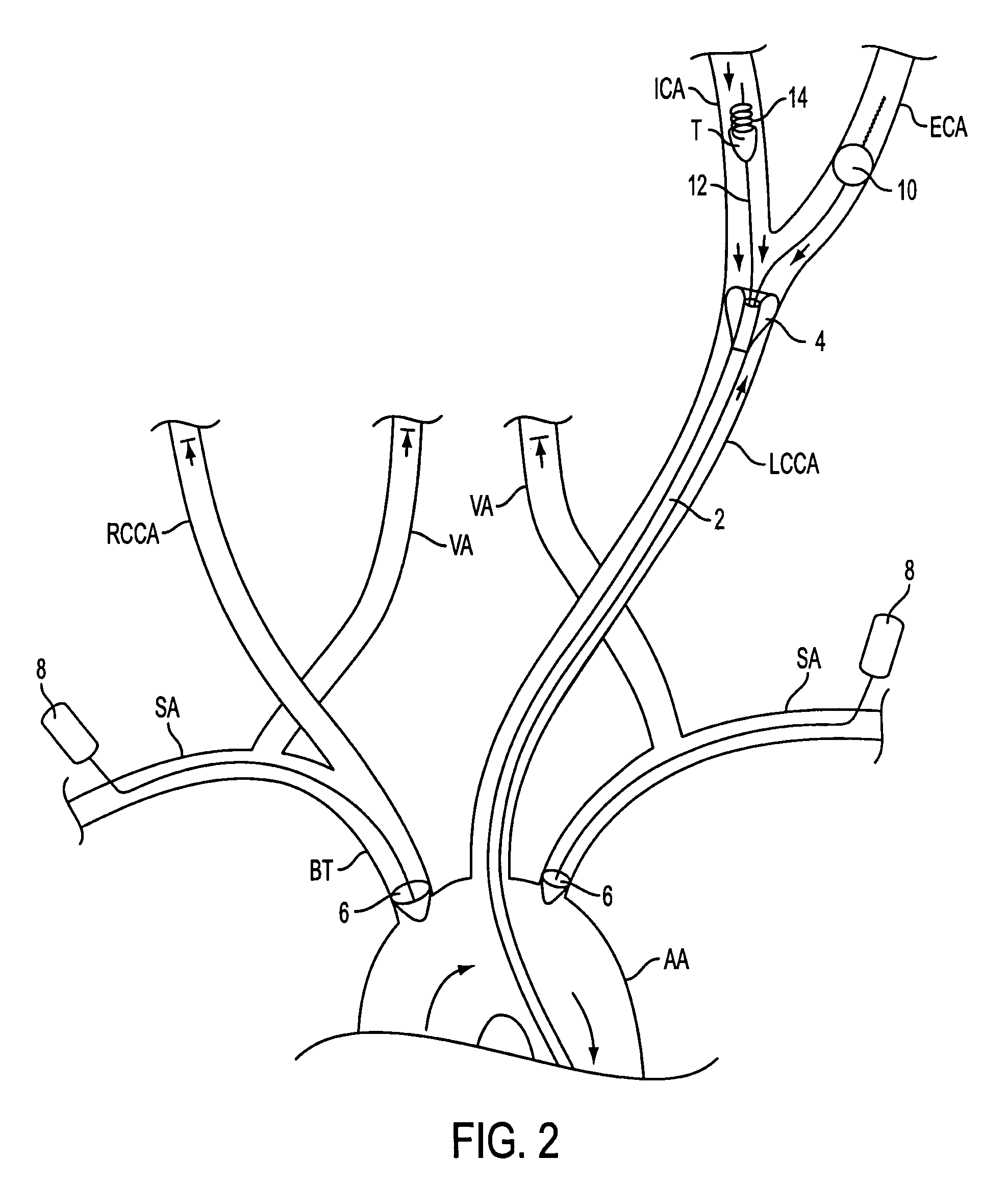Apparatus and methods for treating stroke and controlling cerebral flow characteristics
a technology of cerebral flow and apparatus, applied in the field of stroke improvement, can solve the problems of clotting agents, occlusions that cannot be adequately treated with drugs, and current stroke treatment technologies are inadequate, so as to facilitate the introduction and subsequent removal, quick and efficient treatment of cerebral occlusions, and effective removal of emboli
- Summary
- Abstract
- Description
- Claims
- Application Information
AI Technical Summary
Benefits of technology
Problems solved by technology
Method used
Image
Examples
Embodiment Construction
[0051]Referring to FIG. 1, a schematic of the pertinent vasculature relating to the present invention is provided. Many cerebral obstructions that lead to stroke reside in the middle cerebral arteries MCA. To treat obstructions in the MCA, one approach involves percutaneously and transluminally advancing a therapeutic device to the site of the obstruction via the internal carotid artery ICA.
[0052]It is well known in the art to percutaneously and transluminally advance a catheter in retrograde fashion toward coronary vasculature, e.g., via the femoral artery, external iliac artery, descending aorta DA and aortic arch AA. To access cerebral vasculature, including obstructions residing in the MCA, one approach is to further advance a catheter and / or therapeutic devices in antegrade fashion from the aortic arch AA, into the common carotid artery CCA, up through the ICA and into the middle cerebral artery MCA, as shown in FIG. 1.
[0053]Treating occlusions in the MCA may generate emboli up...
PUM
 Login to View More
Login to View More Abstract
Description
Claims
Application Information
 Login to View More
Login to View More - R&D
- Intellectual Property
- Life Sciences
- Materials
- Tech Scout
- Unparalleled Data Quality
- Higher Quality Content
- 60% Fewer Hallucinations
Browse by: Latest US Patents, China's latest patents, Technical Efficacy Thesaurus, Application Domain, Technology Topic, Popular Technical Reports.
© 2025 PatSnap. All rights reserved.Legal|Privacy policy|Modern Slavery Act Transparency Statement|Sitemap|About US| Contact US: help@patsnap.com



